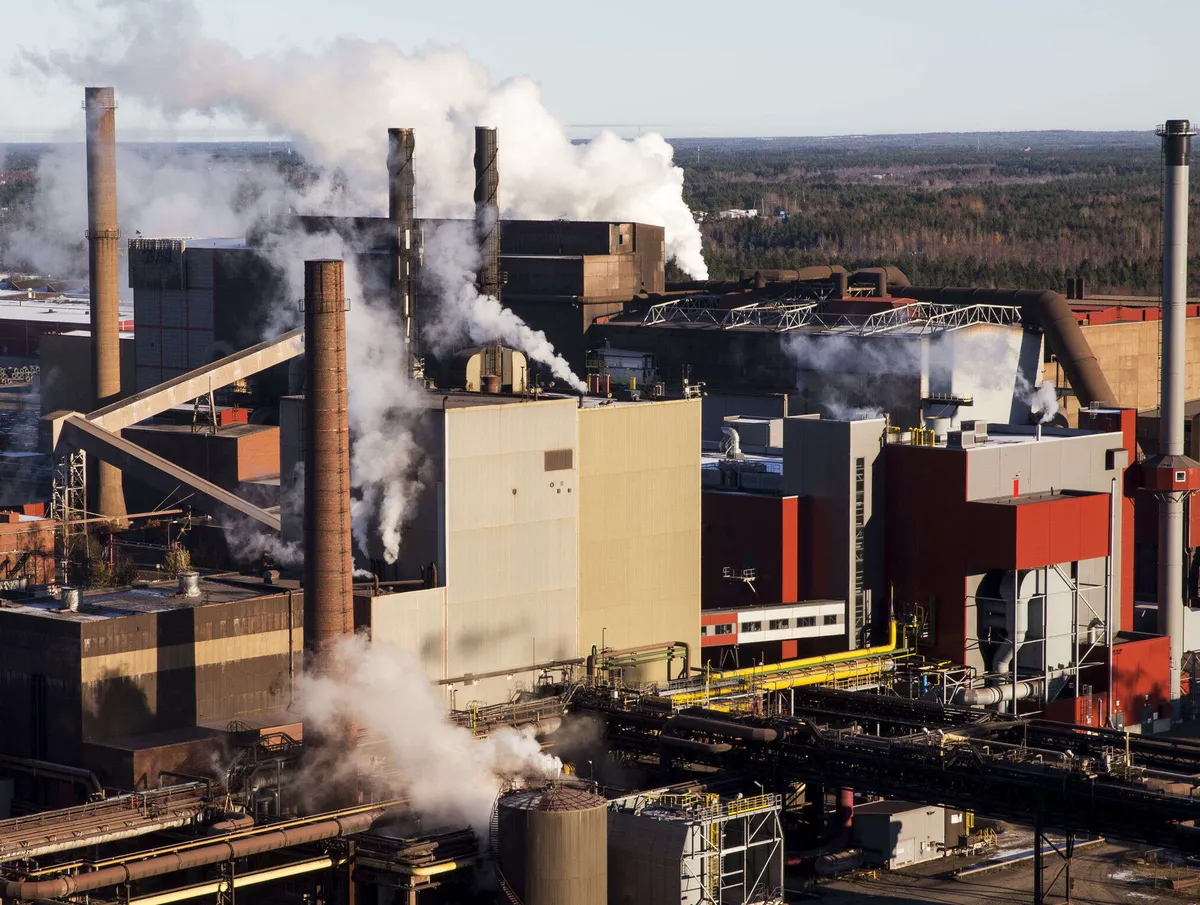Last year, SSAB’s Raahen steel plant was the single largest producer of emissions among all Finnish plants participating in the EU emissions trading system. As a whole, the emission amount of the facilities included in the emissions trading decreased.
The emissions of Finnish facilities that are part of the EU’s emissions trading system were reduced by 19.2 percent last year from 2022, according to the Energy Agency.
In 2023, a total of 15.4 million tons of carbon dioxide emissions were generated from plants included in the emissions trading system, while the previous year’s emissions were 19.0 million tons.
The largest plant-specific emissions were generated by the steel company SSAB:n from the Raahen steel mills, Liquid from the Porvoon oil refinery and the electricity company Helen’s From the Salmisaaren coal-fired power plant. The top three have remained the same for several years.
Emissions from SSAB’s Raahen factory area increased to 3.7 million last year from 3.6 million tons of carbon dioxide the previous year. In the past ten years, Raahe’s emissions were at their highest in 2021, when they rose to 4.2 million tons.
Emissions from Neste’s Porvoon refinery last year were roughly at the level of the previous year at 2.5 million tons of carbon dioxide.
The emissions of Helen’s Salmisaaren power plant decreased from 0.9 million tons of the previous year to approximately 0.7 million tons of carbon dioxide.
Reducing emissions requires substantial investments
SSAB’s Raahen steel plant annually produces approximately eight percent of the direct carbon dioxide emissions of the whole of Finland.
The company outlined a couple of years ago that it aims to renew the steel production of both Raahe and Luleå in Sweden to be largely fossil-free around 2040.
On Tuesday, SSAB said that the renewal will start in Lulea, where the company launched the low-carbon steel pilot plant Hybrit in 2016 as a joint project with a mining company LKAB: n and an energy company The waterfall with.
According to SSAB’s estimate, the size of the Lulajan investment will be around 4.5 million euros and over time will significantly reduce the emissions it produces in Sweden.
The investment ending up in Sweden instead of Raahe has been a big disappointment for Finland in terms of the national economy. It also probably means that the Raahen factory’s emissions will not decrease significantly, at least in the next few years.
Last December, Neste made a decision in principle according to which it aims to end oil refining at the Porvoon refinery by the mid-2030s. From then on, the Porvoon facility is intended to exclusively produce low-carbon fuels and circular economy products.
In December, Neste estimated the investments related to the renewal of the Porvoon facility at around EUR 2.5 million.
Regarding Helen’s Salmisaaren plant, the schedule for stopping the use of coal has changed once.
In 2022, the city of Helsinki decided to close the coal-fired B power plant in Salmisaari in April 2024. Last year, the period of operation was extended to April 2025 due to security of supply concerns highlighted by the energy crisis.
After these plants of SSAB, Neste and Helen, the largest producer of emissions was Outokumpu Tornion steelworks area. Tornio’s steel mills produced 6.3 million tons of carbon dioxide last year, which roughly corresponded to the previous year’s level.
Energy consumption of facilities at last year’s level
According to the Energy Agency, the natural gas consumption of plants in the emissions trading sector, calculated as energy, increased by 5.3 percent last year compared to the previous year. Peat consumption decreased by 37.5 percent and coal consumption decreased by 50.6 percent.
According to the Energy Agency, the consumption of renewable fuels that meet sustainability criteria remained at the 2022 level last year.
The evolution of emissions is influenced, among other things, by weather-related fluctuations in the demand for heating energy, electricity consumption and domestic electricity production.
According to the Energy Agency, the total energy consumption last year remained at the level of the previous year. The electricity produced by nuclear power increased by a third and the net import of electricity decreased significantly.
